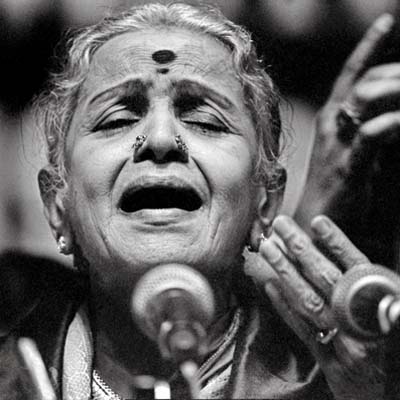Photography turning point in Raghu Rai's quest for music
 New Delhi, Feb 27 - Indian classical music legends, their moods and their legacies can unfold as intensely on camera as on stage - especially if the man behind the lens is Raghu Rai. The ace photographer reveals he once "wanted to become a musician".
New Delhi, Feb 27 - Indian classical music legends, their moods and their legacies can unfold as intensely on camera as on stage - especially if the man behind the lens is Raghu Rai. The ace photographer reveals he once "wanted to become a musician".
"I wanted to become a musician as a child. I love classical music but there was a cultural clash between my dream and the one my father, an administrator in the civil engineering department, had for me. He wanted me to be an engineer," Rai told IANS in an interview.
The contemporary Indian master of press, situation and mood photography has captured 13 of India's greatest classical musicians in 122 black-and-white photographs at the Lalit Kala Akademi in the capital in a show, "Maestros: Masters of Indian Classical Music".
They include Zakir Husain, Alla Rakha, Ravi Shankar, Ali Akbar Khan, Bismillah Khan, Vilayat Khan, Bhimsen Joshi, Kumar Gandharv, Kishori Amonkar, Mallikarjun Mansur, M. S. Subbulakshmi, Dr S. Balachander and Hari Prasad Chaurasia.
"When I became a photographer in the 1960s, it became a turning point in my spiritual quest for music. I attended concerts and even visited the homes of the legends of Hindustani music to photograph them. The shots are in black and white because they were serious subjects and needed serious treatment," Rai said.
Most of the photographs, says Rai, are personal memorabilia - shot either at concerts or at the performers' residences over informal interactions which account for the rare display of emotions on their faces and the intimate ambience.
The photographs have been shot between 1970 and 1990.
The most striking of the cache are some rare shots of late sarod maestro Ali Akbar Khan at his residence in Maihar in Madhya Pradesh and in Los Angeles with his American wife and children.
Rai told IANS: "When I told Ustad Ali Akbar Khan that I wanted to photograph him, he invited me home to Madhya Pradesh. Stay with us and I will cook for you, he said.
"I visited his home and he cooked for me. Then he took me to the room where his father taught him to play the sarod and asked me what I would like to listen to. I said I was a rasik, a listener and would listen to anything he wanted to play. He played rag tilak kamode for me."
Rai stayed at Ali Akbar Khan's "unfinished soundproof music school on the first floor of his home".
Rai says his "photographs capture the human energy and the vibrations that it carries".
"I connect to the musician at the moment when the performer connects to the divine through his or her music."
A set of photographers zoom in on vocalist Kishori Amonkar - a proud and tall woman - at home and on stage. Rai remembers Amonkar for her temper.
"At a small concert organised by socialite Raji Kumar at Taj Mansingh, there was an elderly man who relaxed against the bolsters. Kishoriji told him to sit straight on a stern note. Don't smoke, she chided me. Later Kishoriji told me, 'Raghubhai, when I am performing these small things disturb me and I get upset,'" he reminisced.
Profound shots of Bismillah Khan smoking, playing with children and performing become works of art - with the deep interplay of light and shadow.
A set of four photographs of Zakir Husain and Alla Rakha playing together contrasts Zakir's enthusiasm with his father's poise. Ravi Shankar comes alive as a young idol, as a guru, a doting husband and as a friend kissing Ali Akbar Khan on the crown of his head.
A black-and-white spread of M. S. Subbulakshmi with Sai Baba is almost karmic with the godman blessing her.
The photographs have been compiled into a coffee table collectors' volume with accompanying profiles of the musicians by poet and Lalit Kala Akademi chairman Ashok Vajpeyi. (IANS)